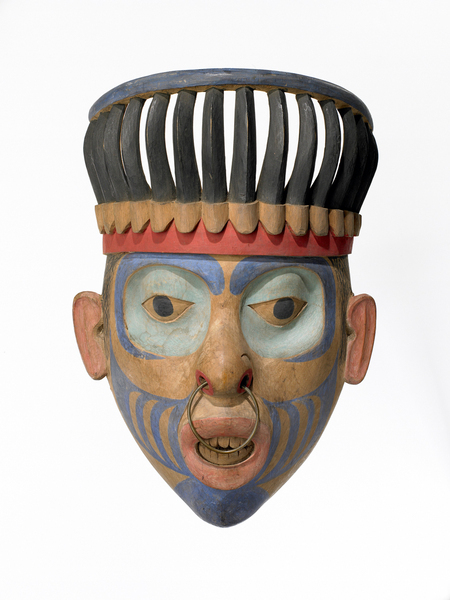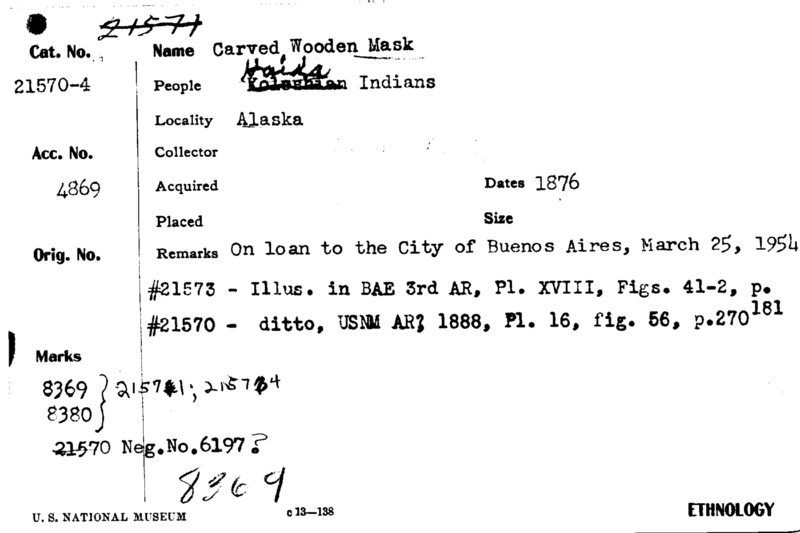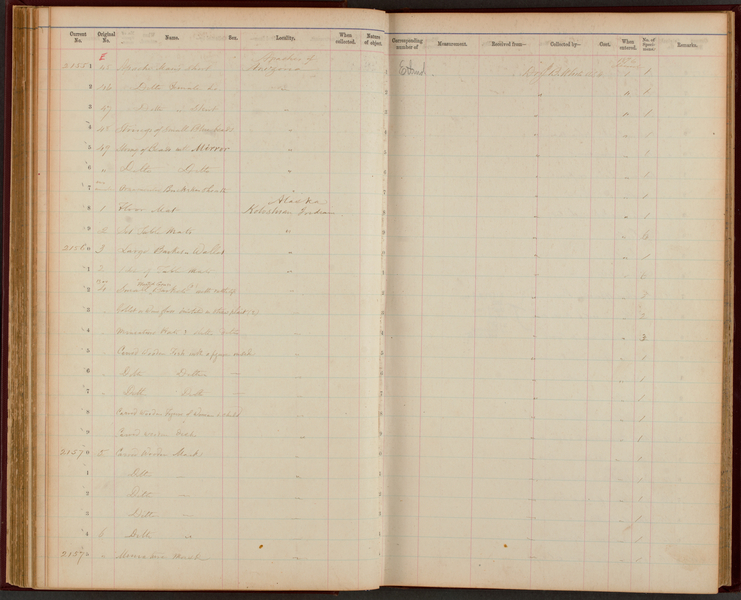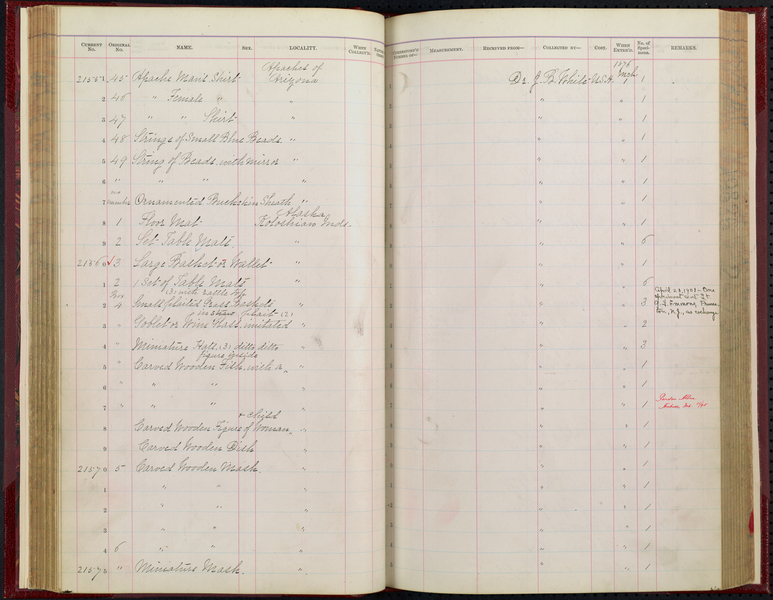Carved Wooden Mask Item Number: E21573-0 from the National Museum of Natural History




Notes
From card for 21570-4: "On loan to the City of Buenos Aires, March 25, 1954. #21573 - Illus. in BAE 3rd AR, Pl. XVIII, Figs. 41-2, p. 181." Mask was originally catalogued as "Koloshian", but identification was later changed to Haida at an unknown time by an unknown person.Object is described on p. 115 of the BAE 3rd Annual Report: "Another incomplete or unfinished dancing mask, probably of Haida make, obtained by Dr. White, of the United States Army, in Alaska, for the National Museum. This one was evidently made for sale, and had never been used or made fit for use. The wood was fresh and unstained, and no peep-holes or breathing holes or arrangment for fastening the mask on a wearer's head had been made. It represents a face with a tiara of bear's claws over the forehead. The lips, ears, nostrils, and band below the tiara are red, colored with oil paint obtained from the whites, as is the rest of the painted work. The bear's claws, pupils of the eyes, and the hair are black; the irides greenish; and the dark tracery on the face ... as well as the upper bar of the head-dress are blue. The light parts of the figure in the original show the uncolored natural wood. This is one specimen of many which have of late years been brought from the northwest coast, which have been made expressly for sale as curiosities, and which want essential parts which should be found in an article used or intended for use. A ring made of brass wire is inserted in the nasal septum, but such is rarely, if ever, now work by the people of the Archipelago."This object is on loan to the Anchorage Museum at Rasmuson Center, from 2010 through 2027.Source of the information below: Smithsonian Arctic Studies Center Alaska Native Collections: Sharing Knowledge website, by Aron Crowell, entry on this artifact http://alaska.si.edu/record.asp?id=532 , retrieved 6-24-2012: Mask The mask depicts a singing shaman who wears a nose ring, face paint, and crown of mountain goat horns. Haida shamans, both men and women, sought to cure sickness by extracting disease-causing spirits or objects from their patients' bodies. Sometimes a cure required that they capture and restore a person's wandering soul.
Item History
- Made in Alaska, USA
- Collected in Alaska, USA
- Received from Dr. John B. White during 1876
What
- Name
- Carved Wooden Mask
- Identification Number
- E21573-0
- Type of Item
- mask
Who
- Culture
- Haida
- Received from
- Dr. John B. White
Where
- Holding Institution
- National Museum of Natural History
- Made in
- Alaska, USA
- Collected in
- Alaska, USA
When
- Acquisition Date
- during 1876
Other
- Accession Number
- 004869